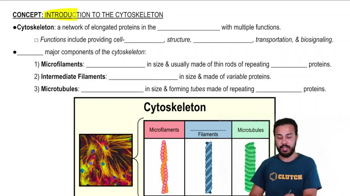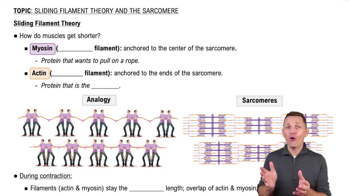Mark the following statements about the cytoskeleton as true or false. If a statement is false, correct it to make a true statement.
Actin filaments combine with myosin motor proteins to provide the cell with mechanical strength.
 Verified step by step guidance
Verified step by step guidance Verified video answer for a similar problem:
Verified video answer for a similar problem:



 6:05m
6:05mMaster Introduction to the Cytoskeleton with a bite sized video explanation from Bruce Bryan
Start learning